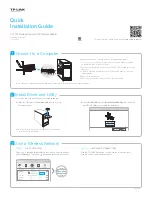
Company Confidential
15
Raveon Technologies Corp.
frequency. For narrow-band radios (12.5kHz channels), the user’s frequency
must be a multiple of either 6.25khz or 5.00kHz. For wide-band models, the
frequency must be an even multiple of 10kHz or 12.5kHz.
9.3 Data Transmission
To transmit data, simply send one or more bytes of data into the serial port of the
modem. When a full packet of data has been collected into the internal buffer of
the modem, or when there is a pause in the data, the modem will automatically
key its transmitter, and send the data over the air.
9.4 Serial Port Baud Rate
While the modem is transmitting, the user may continue to send more data into
the
Radio Modem.
Because the buffers in the Radio Modem are full-duplex, the
serial port data rate and the over-the-air data rates are independent. The serial
port baud-rates may be set slow to accommodate legacy equipment, or set at
high-speed to minimize latency. The over-the-air data rate is usually 4800 baud
for narrow-band channels, and 9600 baud for wide-band, although faster or
slower rates may be used.
In Packet Mode, selection of the serial port baud-rate is important. As shown in
Figure 1 (Packet Mode of Operation)
above, if the serial port baud-rate is the
same as the over-the-air baud rate and the packets are short, the channel
utilization is only about 50%. But, if the serial port baud rate is set much higher,
say 2-8X the over-the air rate, the channel utilization becomes near 100%.
Because the modem can handle serial-port data rate far in excess of the over-
the-air rate, the efficiency of the modem in Packet Mode is approximately the
same as other brand modems that cannot operate in a Packet Mode — with the
added benefit or ARQ, error-free data, and addressing.
Note that many Windows applications which use the serial port, such as
HyperTerminal, put large gaps between the bytes of data they send out the serial
port. If an application is not getting the desired throughput, verify that it is not an
artifact of the Operating System or the computer.
9.5 Flow Control
If large amounts of data will be sent with the
Radio Modem
, it may be possible to
overflow the internal data buffer. To ensure the transmit buffer does not
overflow, enable and use hardware flow control. Hardware flow control is
enabled with the
ATCH 1
command. Note that the modem will always indicate
the status of its internal buffer using the
CTS
signal on the DB-9 serial connector.
When CTS is negated, the internal buffers are more than 80% full. When it is
asserted and it is “Clear to Send”, the buffers are less than 80% full.
9.6 Packet Size
The over-the-air packet size may be set with the
ATTT xx
command. Once the
modem receives one full packet of data via the serial port, it will automatically key
the transmitter and send the data. Factory default is 80 bytes.
















































